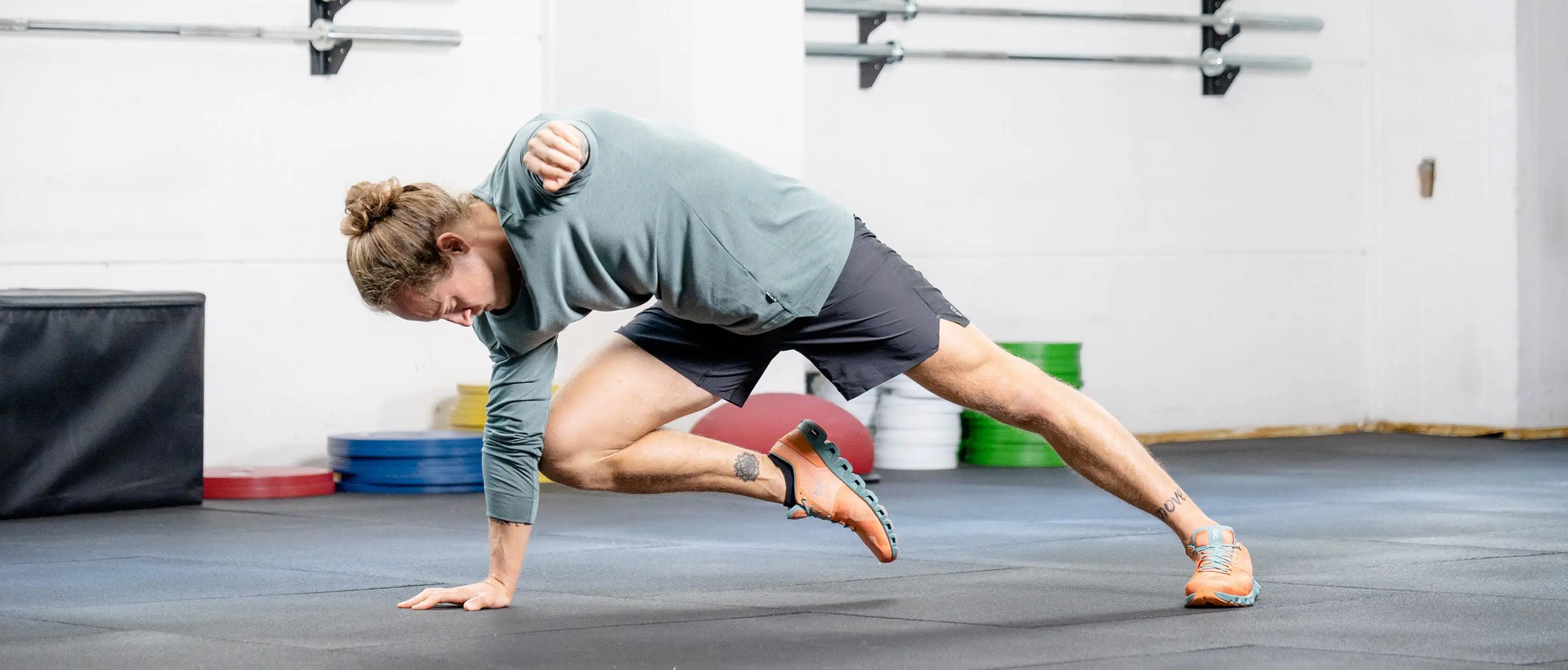

Adding mixed-sport workouts to your training routine can have some serious benefits. Simply put, what you don’t use you lose. This three-part series is designed to target your core strength, mobility and explosiveness, so you’ll be well-equipped for your next run.
Whether you’ve just started running or you’re an experienced marathoner, adding mixed-sport workouts to your training can have some serious benefits that you might not be aware of. Working a variety of different muscle groups, improving your cardiovascular fitness and reducing the chance of injury (to name just a few) are all great reasons to train your body in a new way.
To help take your running game to the next level, we’ve teamed up with Zurich’s local movement enthusiast and personal trainer Leandro Fornito.
This three-part series can be done from the comfort of your home and is designed to target your core strength, mobility and explosiveness.
The core is the foundation of movement. But it’s not just the abdominal muscles that need to be worked. Using the whole core (back, hips and pelvis) will help build a base for stability and a strong push-off feeling while running.
Leo’s recommendation on how to tackle the four core-focused exercises above:
- Complete all four moves consecutively (40 seconds on, 20 seconds off for each movement)
- Break for 1 minute
- And repeat the combination 3-6 times
“Depending on your level, take a 1 min break after one full round. Then go again. Take no breaks if you want to increase the intensity and a 2 min break if you’re just starting out.”
Leo’s philosophy to movement challenges the traditional fitness rule book:
In my philosophy of training, you use the whole body. If you do traditional ab crunches, you only work the abdominal muscle group. But with these moves you use your legs, your knees, the wrists, the ankles. And you work on your coordination, which helps to build brain and muscle memory.
Mobility is the essential base we as runners need to perform at our best and reduce the risk of injury. By focusing on this aspect of your training on a regular basis, you’ll see improvements to your range of motion and be able to knock off a few minutes on the clock.
So, the perfect execution? Here’s Leo’s recommendation:
Move 1
“Keep your arms folded and stretch as far as you can but remember to take it slow at first. This movement will increase your mobility and will work on your hamstrings.”
For this exercise, complete 10 meters or move for approximately 1 min.
Move 2
This move is harder to perfect than you might think. Leo broke down the purpose of this movement for us:
“In the fitness industry there is this rule of keeping your knee in line. But these exercises twist that theory and break the line to offer you more depth and range. This actually makes your knee stronger. But you need to take it slowly when working on your knees and range.”
Complete 6-10 reps and increase by range and numbers as you build up strength in the knees.
*Make sure your body remains in a straight line throughout the movement and reps.
Move 3
“The goal is to sit on the heel or as low as you feel comfortable. Again the knees have to get used to this position first. But by building up strength in the knees, we’re preventing injuries and increasing dynamics. Which is great for runners.”
30-60 second, hold each side.
Move 4
“You need mobility to become a better runner. But it’s not only about having range, it’s about strengthening the bone structure, the legs, the knees, the ankles – every part of your body.”
Complete 8-10 reps on each side.
Runners are no strangers to interval training. Fartleks have long been used as a way to increase runners’ endurance and performance. But these four interval moves incorporate the whole body, ensuring no muscle group is overlooked.
For this workout, use the same combination as we did for the core:
- Complete all four moves consecutively (40 seconds on, 20 seconds off for each movement)
- Break for 1 minute.
- And repeat the combination 3-6 times (Modify to your current fitness level)
“If you run on trails or jump around, you don’t have perfect angles, so you shouldn’t always train perfect angles in the gym. Runners often have pain just below the knee cap but it’s not from over using, it’s under using. The more range and depth you can add to your workouts means less chance of being injured.”
Shot in Zurich at uego’s Personal Training